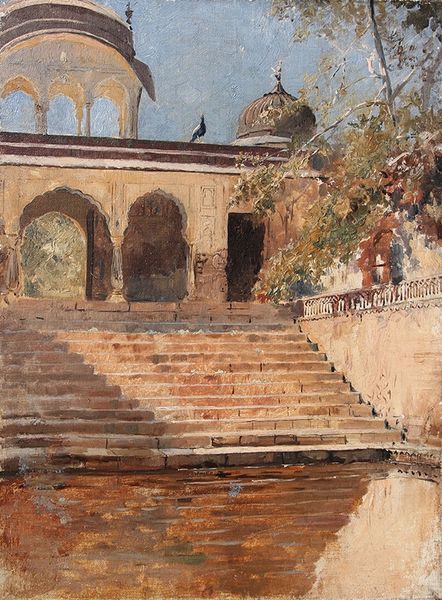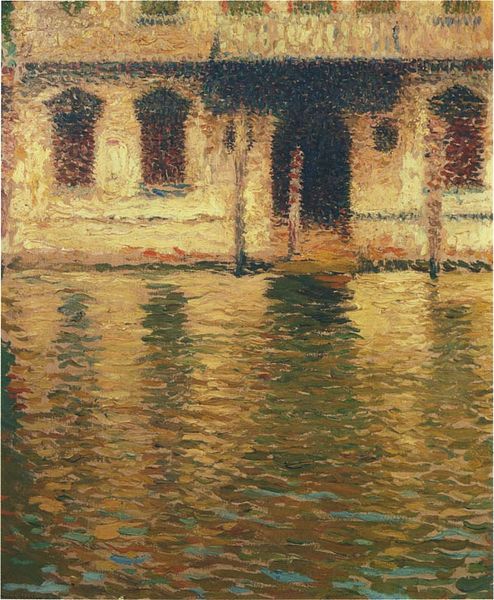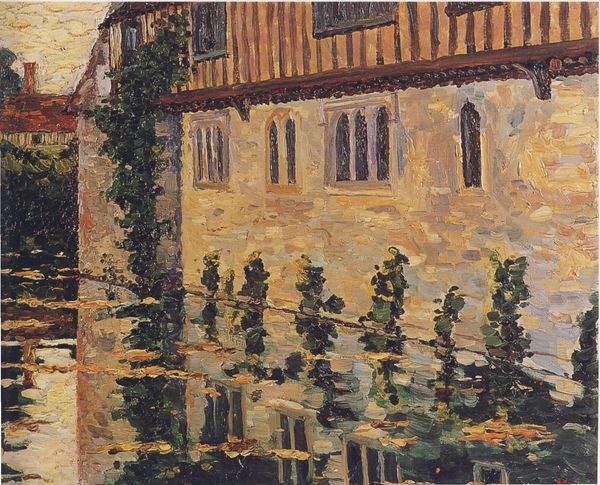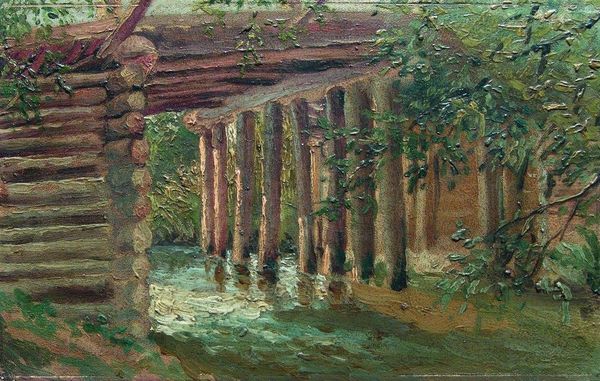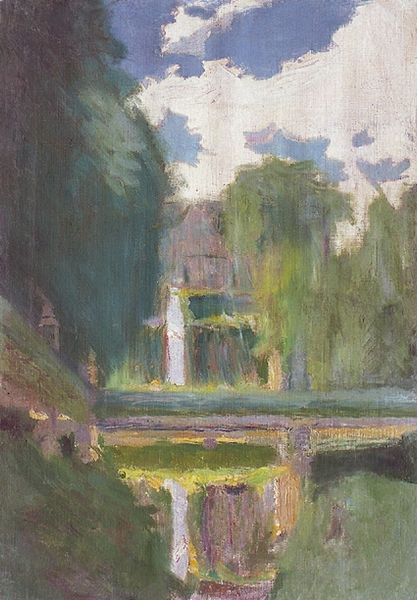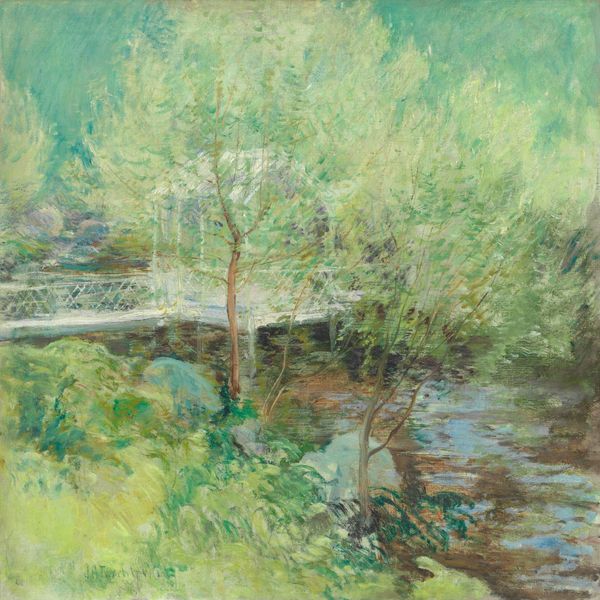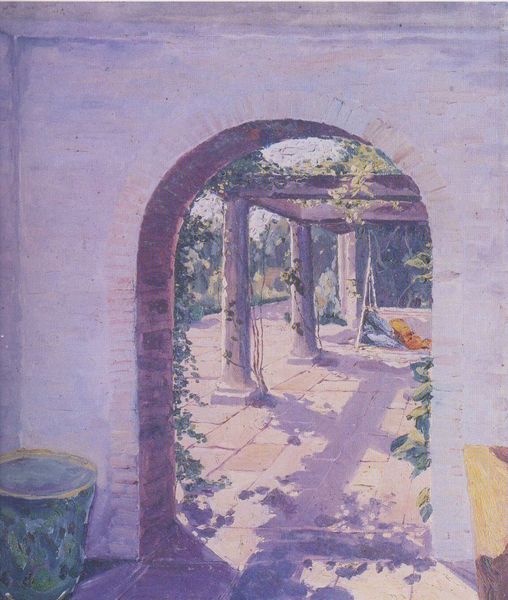
Under the bridge at Hampton Court 1874
0:00
0:00
alfredsisley
Kunstmuseum Winterthur, Winterthur, Switzerland
Dimensions: 50 x 76 cm
Copyright: Public domain
Curator: This is Alfred Sisley's "Under the Bridge at Hampton Court," an oil on canvas created in 1874. You can find it on display here at the Kunstmuseum Winterthur. Editor: My initial feeling is that this image seems constrained, almost claustrophobic. The massive columns of the bridge dominate the canvas, pressing down on the water and figures below. Curator: Interesting, because Sisley painted this en plein air. So this piece offers a document of the leisure activities along the Thames, certainly, but within the framework of burgeoning industrial infrastructure. I think it underscores the evolving social landscape of the period. Rowing, the day at the river… who had access? What statement is he making with the juxtaposition? Editor: It's interesting that you bring that up. The bridge itself feels almost like a temple structure. Note the monumental forms and strong vertical lines—it directs the eye downriver, perhaps to a commercial hub in the distance? Is it really a signifier of leisure, or are we seeing signs of something more foreboding at play here? Curator: Bridges connect; they facilitate movement. But, of course, they also represent divisions and hierarchies—who gets to pass, and who remains confined? The figures almost appear incidental, like decorative details overshadowed by the sheer magnitude of industrialisation and infrastructure. Editor: I am intrigued by the almost spiritual quality of the reflections in the water, how they echo the forms above and also seem to dissolve them, which is echoed in the dissolution of people on the far shore. Could the bridge also be seen as a symbolic threshold—between the mundane and the sublime, or the natural and the man-made? Curator: That's a powerful thought. Ultimately, the bridge as depicted acts as both an anchor, literally rooted in the landscape, but simultaneously creates a framework for observing those societal divisions that are increasingly felt through Modernity. Editor: Considering it like that changes the way I read the water completely—it's not just a tranquil surface; it's a dynamic space where the weight of history is reflected. Thank you for guiding me on a fascinating interpretive journey!
Comments
No comments
Be the first to comment and join the conversation on the ultimate creative platform.

